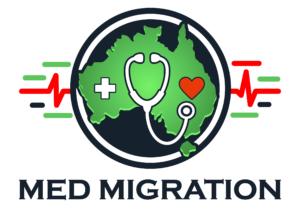As Australia’s healthcare workforce shortages grow—particularly in rural and regional areas—the government has introduced flexible visa pathways to attract international talent. One of the most important yet under-recognised options is the Designated Area Migration Agreement, or DAMA.
In this blog, we’ll break down what a DAMA is, how it works, and why it might be the ideal pathway for overseas-trained healthcare professionals who want to live and work in regional Australia.
What is a DAMA?
A Designated Area Migration Agreement (DAMA) is a formal agreement between the Australian Government and a regional area, allowing employers in that area to sponsor overseas workers for roles experiencing critical skill shortages.
Unlike the standard visa programs, DAMAs offer flexibility. They allow for concessions around English language requirements, age limits, skill levels, and even occupations that are not on the standard Skilled Occupation List.
Why DAMAs Matter in Healthcare
Many regional and rural healthcare services struggle to fill essential roles with local candidates. DAMAs help bridge that gap by allowing local employers to sponsor international workers for healthcare roles such as:
- General Practitioners (GPs)
- Nurses (Registered Nurses and Enrolled Nurses)
- Aged Care Workers
- Allied Health Professionals (e.g. Physiotherapists, Occupational Therapists, Radiographers)
- Mental Health Workers and Psychologists
- Support Workers and Disability Carers
This is a win-win: communities receive the healthcare support they need, and overseas professionals gain a viable pathway to work and live in Australia.
Key Benefits of a DAMA Visa for Healthcare Professionals
1. Expanded Occupation List
DAMAs often include roles not listed on the standard Skilled Occupation List—great news for aged care workers, enrolled nurses, and support workers.
2. English and Age Concessions
Applicants may be eligible with lower English test scores or over the standard age limit, depending on the DAMA region.
3. Clear PR Pathways
Many DAMA visas lead to Permanent Residency, particularly under the Subclass 186 Employer Nomination Scheme after a qualifying period.
4. Job Security
Since DAMA roles address regional shortages, employers are often highly motivated to support and retain overseas staff long-term.
Where Are DAMAs Available?
As of 2025, there are DAMAs operating in multiple regions across Australia, including:
- Northern Territory
- South Australia (Adelaide City Technology & Innovation and Regional SA DAMA)
- Far North Queensland
- Orana (NSW)
- Goulburn Valley (VIC)
- Pilbara and South West (WA)
- Goldfields (WA)
Each DAMA has its own list of eligible occupations, concessions, and local criteria—so it’s important to get professional guidance to see where you fit best.
What Healthcare Students and IMGs Should Know
If you’re an international student in healthcare, or an International Medical Graduate (IMG) seeking sponsorship in Australia, a DAMA pathway might be your best bet—especially if you’re open to working in regional areas.
Did you know? Some DAMAs allow recent graduates with relevant qualifications to apply, even if they don’t yet have years of work experience.
How MedMigration Can Help
At MedMigration, we specialise in helping healthcare professionals—from students to specialists—find the right migration pathway. We can:
- Assess your eligibility for DAMA programs
- Connect you with regional employers who are approved sponsors
- Guide you through the visa process, from paperwork to permanent residency
Final Thoughts
DAMAs represent an exciting and flexible migration pathway for healthcare professionals ready to make a difference in regional Australia. Whether you’re looking to start your career or settle permanently, a DAMA could open the door.
Want to find out if a DAMA pathway is right for you?
Get in touch with the team at MedMigration today.


Comments are closed